When people think of ship postcards in New York’s harbor, ocean liners, ferries, and cargo vessels come to mind. But some lesser-known vessels, now mostly long-gone, have been attractively depicted on postcards.
These other vessels fall into the two categories: greeters and suppliers. The greeters are divided into those vessels related to inspecting and receiving passengers, seafarers, and handling mail from incoming vessels, and on to pilot boats, fire fighting boats, tugboats, and harbor light ships that mark the entrance of shipping channels into the harbor.
The suppliers are the barges, pulled by tugboats that delivered cargo or coal from mines in Pennsylvania to the docks in Manhattan and Brooklyn, or barges that carry freight cars from New Jersey to Manhattan and Brooklyn.
In the 20th century the first of the greeters that met ships coming into the New York harbor was the Lightship Ambrose, a name given to multiple lightships that served from 1823 to 1967 as the sentinel beacon marking the Ambrose Channel, New York Harbor’s main shipping channel. One of these lightships is now on display at the South Street Seaport in New York. A circa 1930s postcard of the White Star Line’s RMS. Olympic includes an excellent view of the Lightship Ambrose.
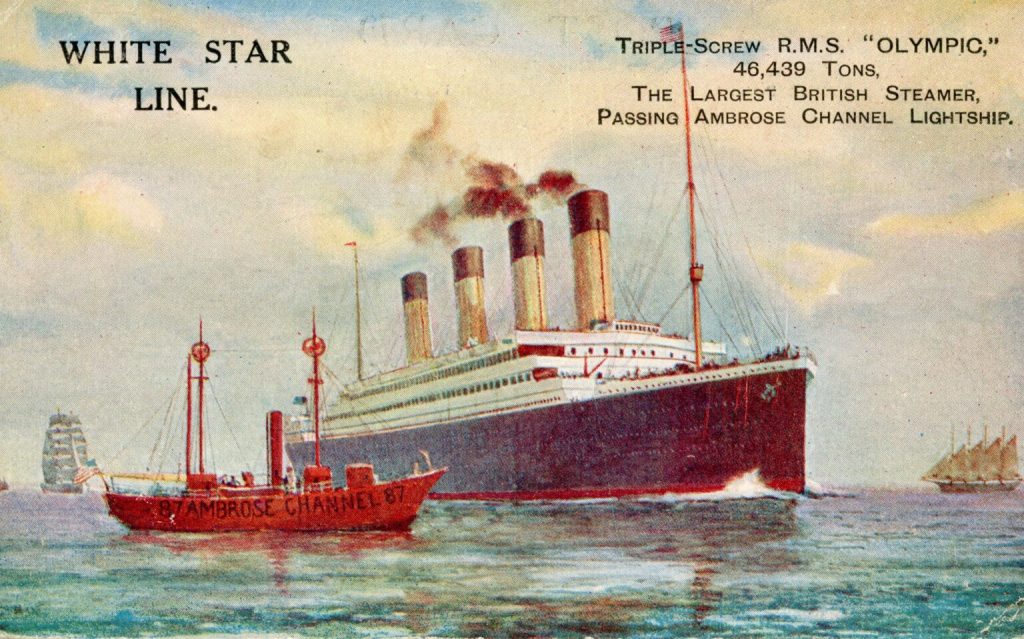
The oldest of the greeter vessels are the pilot boats that delivers to the incoming ship a member of the Sandy Hook Pilots Association. The age of the great ocean liners docking in New York ended about 1957 with the advent of transatlantic jet travel, so now the Sandy Hook pilots, that have been doing this important service since their organization was founded in 1694, just guide cargo ships, tankers, and private yachts over 100 feet in and out of New York Harbor.
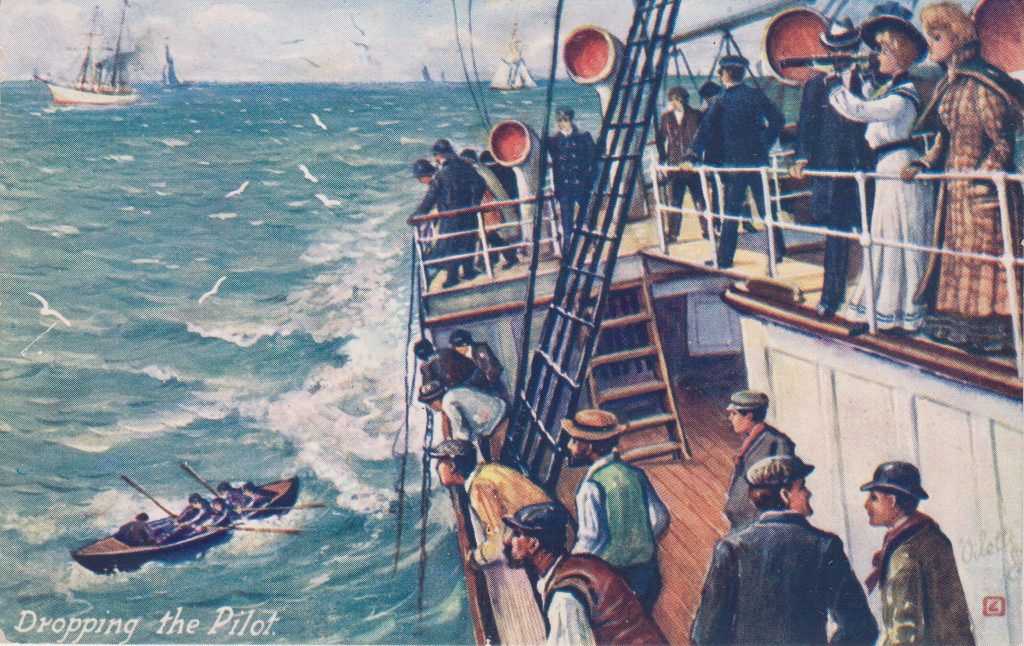
Dropping the Pilot is a vividly painted scene from Raphael Tuck & Sons’ series entitled “A Trip to Europe.” The caption on the back describes this event as “quite spectacular and creates no little commotion, the passengers gather to watch the pilot’s agility in getting over the vessel’s side and into his little boat that is waiting for him.”
Another postcard entitled Quarantine from the same Tuck series portrays the scene at the Staten Island Quarantine Station when a health officer boards an incoming vessel, “whose duty it is to inquire as to the health of all on board and to inspect the condition of the vessel and cargo. If he detects a symptom of any contagious disease, he detains the ship and all on board.” These quarantine inspections which had been going on since 1744 ended in 1937.
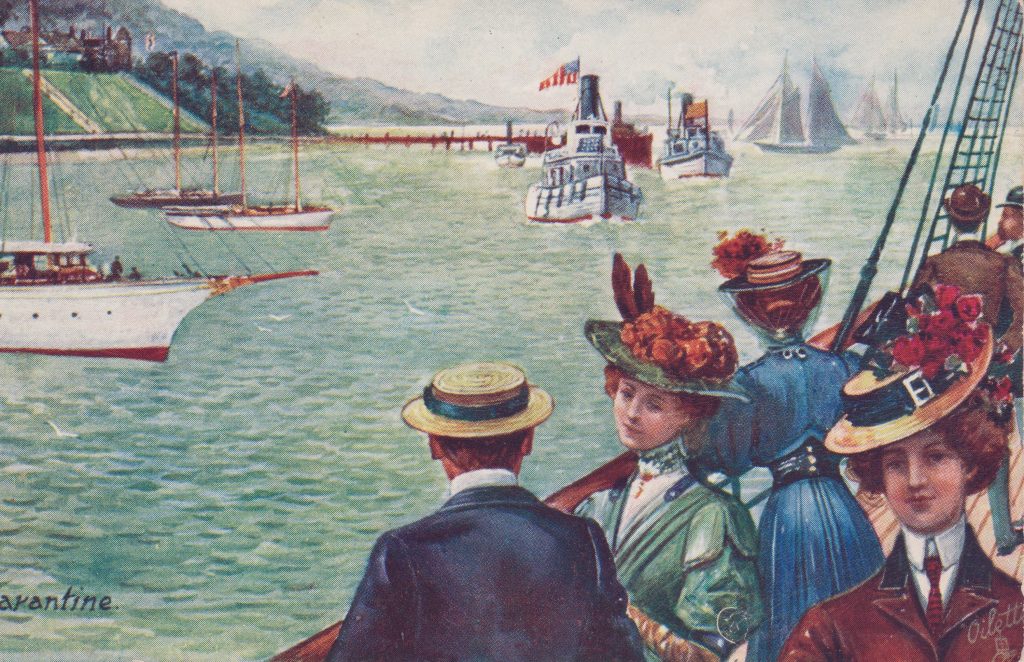
The stopping of ships for quarantine inspections was also the time for picking up mail that had already been sorted for distribution in the United States. It was then loaded into the hold of a special mail vessel, and quickly taken to shore where it was sent to the city post office, loaded on waiting railway mail cars, or sent elsewhere on other steamships.
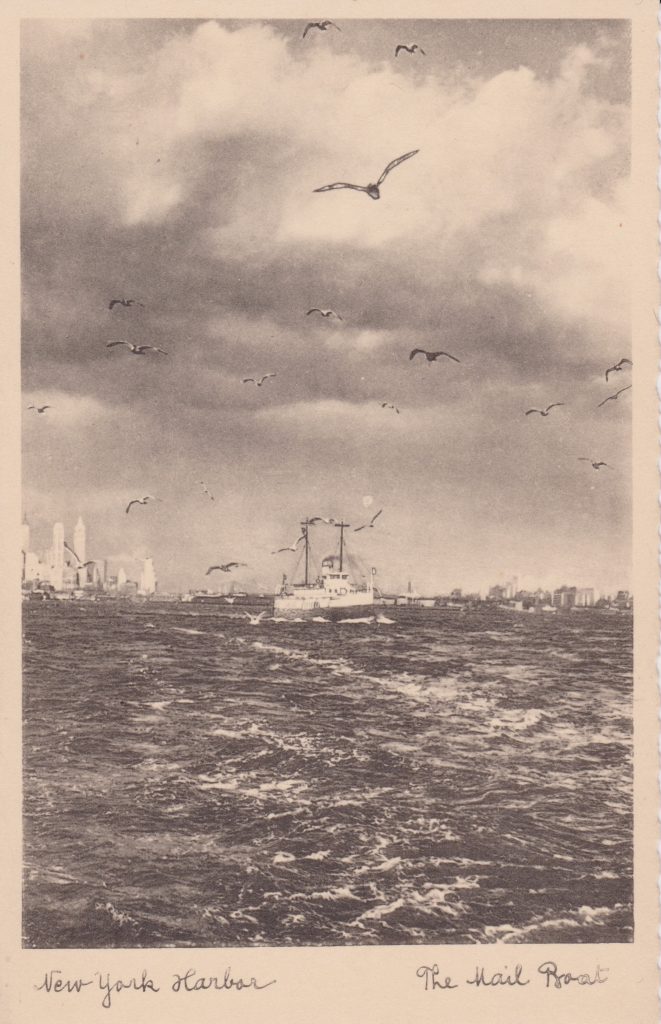
A photograph of one of these mail boats ostensibly headed towards Staten Island appears in a series of 1930s half-tone collotype postcards of Manhattan and Brooklyn.
The photographer, Percy Loomis Sperr was well-known for his street photography of Manhattan from the 1920s to the ‘40s. The card was printed by Max Jaffe of Vienna, Austria. Each one was developed on aluminum plates and printed by offset lithography.
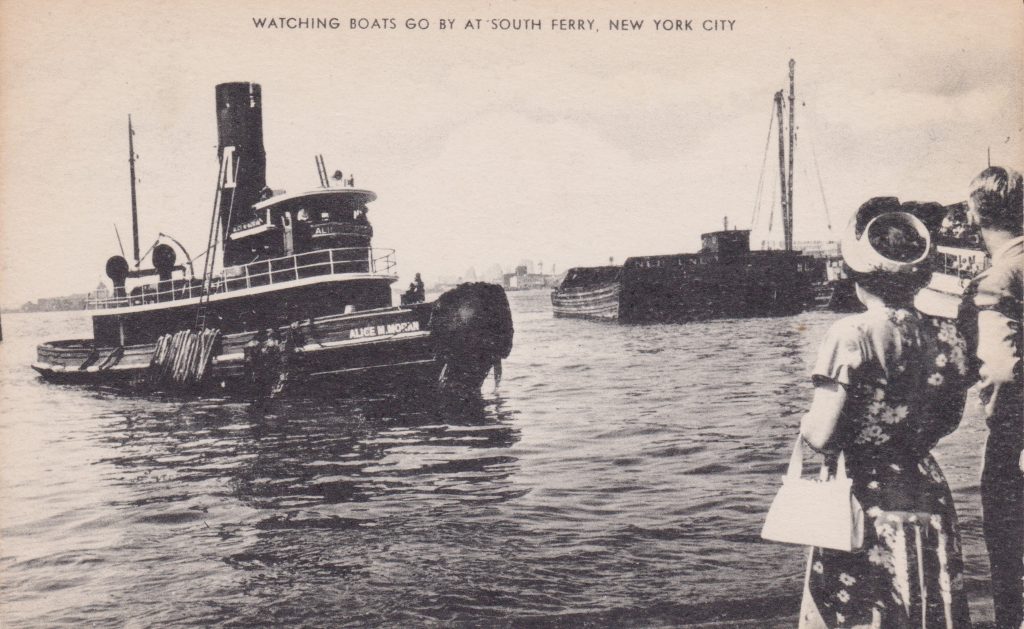
Innumerable tugboats have helped dock ships and towed barges in the New York Harbor. The Alice W. Moran tugboats shown in this early 1950s image belonged to the Moran Towing Company of New York. Built in 1919, it served for 34 years before being scrapped in 1953.
Many steamship passengers who were immigrants faced additional inspections on Ellis Island. Whenever such examinations were needed, a transfer steamer would take those in question to Ellis Island from steamship piers and thereafter, if they passed inspection, back to the city. From 1921 to 1929 this task was performed by the Machigonne, seen here in one of a series of postcards published in 1925 by D. T. McGowan, the commissary contractor on Ellis Island.
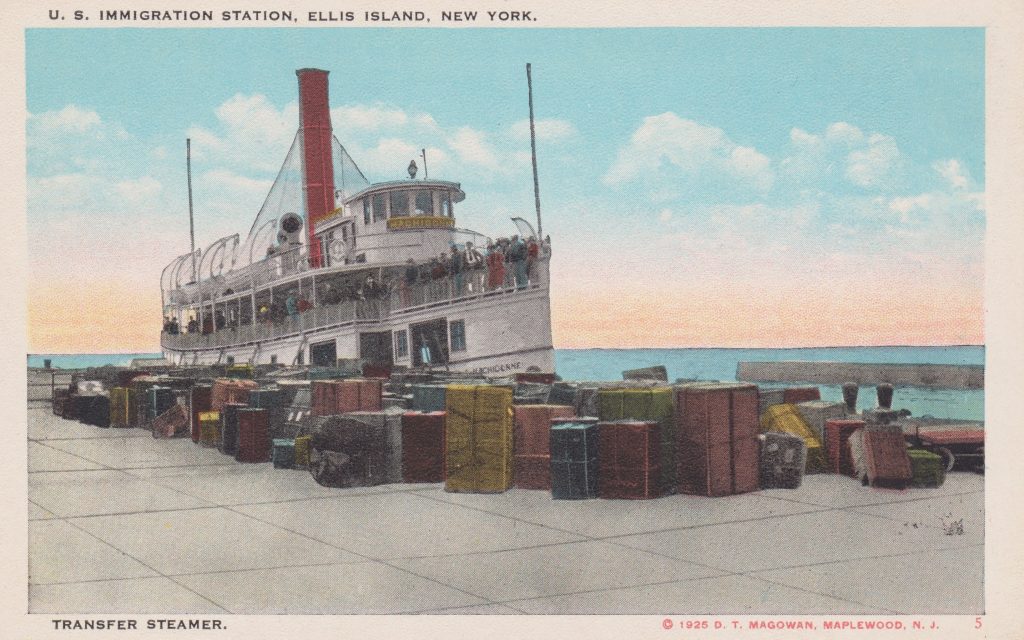
The spiritual and practical needs of the crews of the ships in New York’s harbor were ministered to by the Seaman’s Church Institute. Its outreach to these crews included providing temporary accommodation and other services like mail delivery at its South Street building. It also operated the J. Hooker Hamersley, a small steamer built in 1915 which transported crews to and from ships and delivered books, hats, sweaters, and other items to ships.
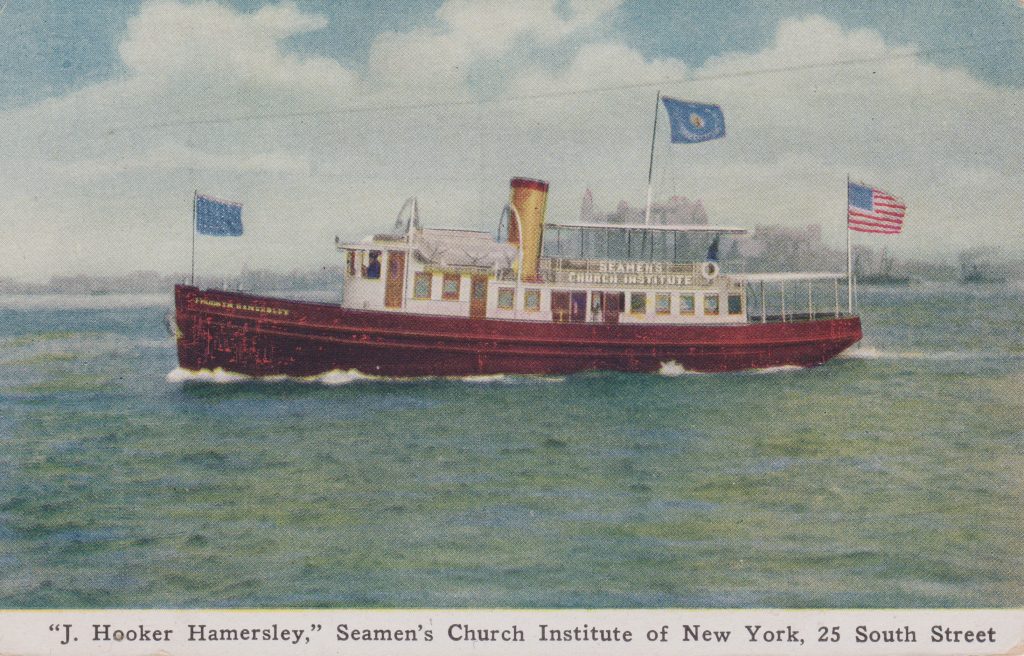
Barges on the Hudson, East, and Harlem Rivers supplemented railways, roads, and bridges by helping to deliver goods to the New York City boroughs. A circa 1906 Rotograph Company postcard shows some of these barges tied up along the Harlem River.
Anthracite coal was transported from Pennsylvania via the 108 milelong Delaware and Hudson Canal to Kingston, New York on the Hudson River, and then to New York City and Albany. Another Max Jaffe half-tone collotype card from the 1930s shows some of these coal barges on the Hudson River, south of Battery Park at the southernmost tip of Manhattan Island.

A large fleet of about 240 tugboats and railway car barges was operated into the 1960s by the Erie Railroad. Here is a postcard of their tug, Akron, built in 1953 and scrapped in 2010, and some of the railway car barges it pulled.
The final card in this collection is a circa 1907 image of the fire boat New York at work tackling a raging blaze. Like the other postcards shown here, it points to the fact that the New York harbor with its always bustling traffic has always been about functionality, with different kinds of ships and barges serving the various and always changing needs of this great metropolis.
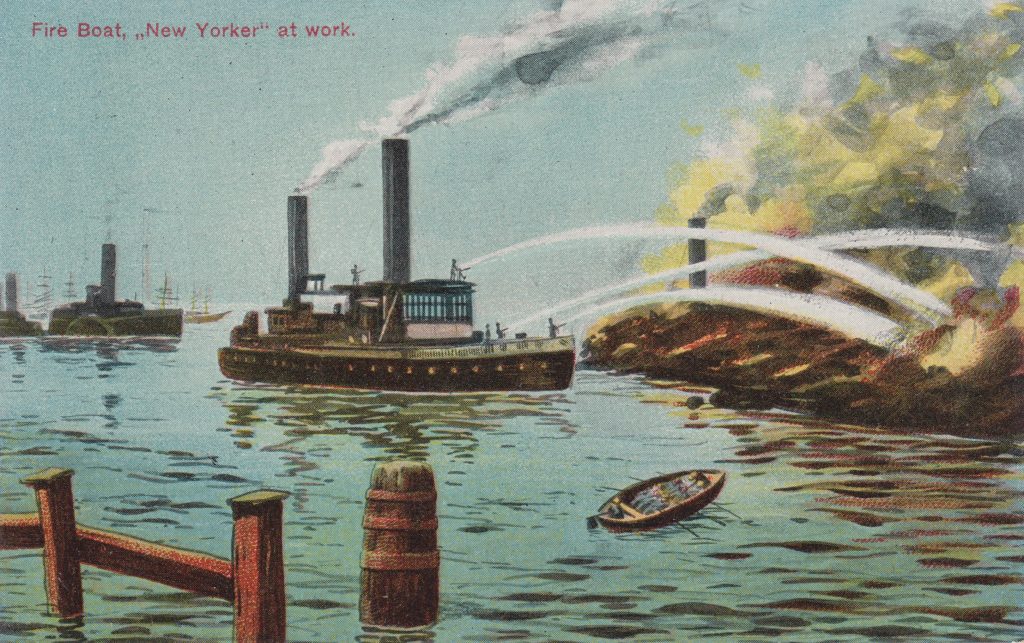
New York has been molded by its role as a great port and major gateway to the United States.
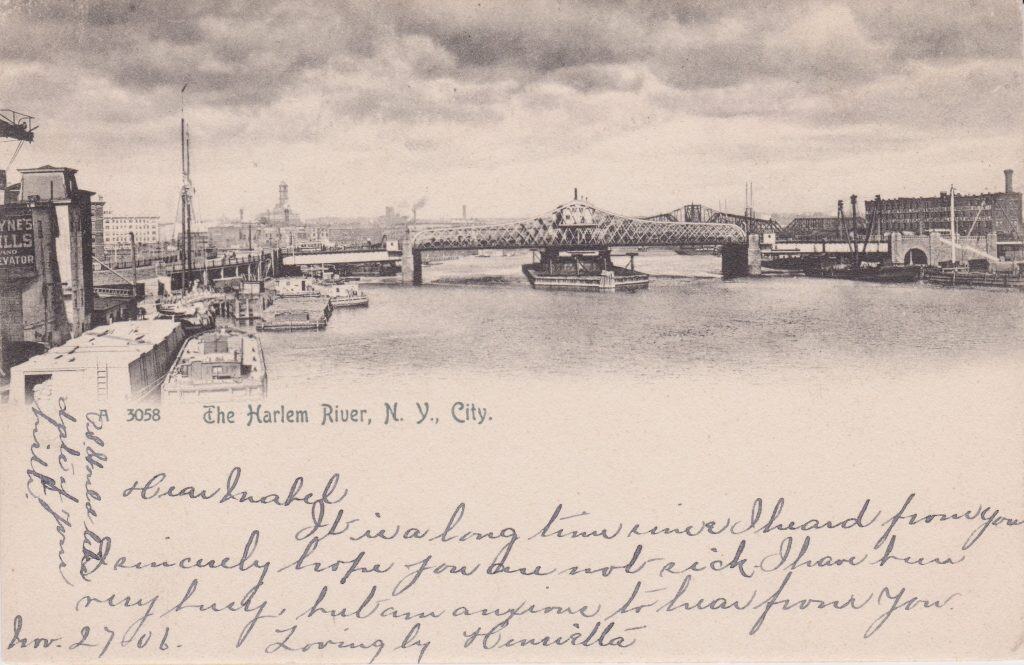

Fascinating
Very interesting. Thanks.
Very interesting and informative article.
Thank you so much for your interesting article, Kyle. I love postcards dealing with ships and boats of all types and sizes. Your article filled in many of the neglected stars of major ports such as New York.
Very interesting & informative,thank you
Great idea for an article and really well done. Thanks, Kyle.
Nice article.
I did a brief internet search to see what the date was on the Raphael Tuck “A Trip to Europe” postcard series. I couldn’t readily find anything definitive, but a few hits suggested the first decade of the 20th century. If that is true, then it seems the “Dropping the Pilot” card may have been produced several years after the famous cartoon about Bismarck, of the same name.
https://germanhistorydocs.ghi-dc.org/sub_image.cfm?image_id=1691
great piece – grew up in Stuy town off the east river – many weekends with parents eating hot dogs at the Battery – always and still love the tugs – thanks for the post –
I enjoyed this review and this collection of various boats to be discovered and searched for by collectors. Thanks Kyle for the lively text. The barges are some of my favorites, pushing and maybe pulling big loads .
Thank you! I really enjoyed this article.